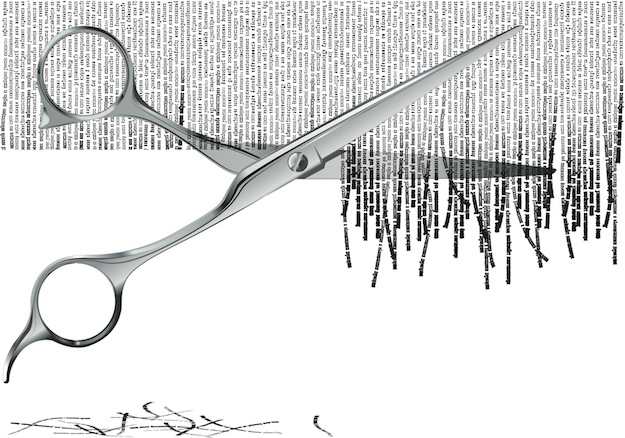Media news you missed while you were busy
following the fucking stations of the cross.
- This week Gannett became the latest media company to quarantine its publishing division from its broadcast and digital division. It joins the Tribune Co., Time Warner, Journal Communications/E.W. Scripps, and Rupert Murdoch’s News Corp. in classifying print as the Ebola of the media industry.
But before Seven Days spins its Stuck in Vermont series into a stand-alone company, Ken Doctor reminds us that these moves were all made by public companies, which operate under a specific type of logic:
These splits are about financial engineering. As public companies, their primary duty is indeed to maximize shareholder value. Newspaper properties are depressed and distressed, and the public markets have less and less interest in them. So sequestering the print assets to “unlock the value” of broadcast and digital just makes financial sense … Gannett Publishing hasn’t grown publishing revenues in any year since 2006. It’s not much different from its peers in that regard. But that failure to grow — combined with the inability to name the future year when it would grow — is the driver of these splits.
So what does that mean for the print divisions that were left behind?
It’s not necessarily leaving print behind to die, just to fend for itself. “Essentially, the theory goes if you spin off the print piece, the print can have the freedom to focus on the business of print itself,” says [eMarketer analyst Mike] Hudson.
One early casualty of the restructuring is Sports on Earth, a joint venture between Gannett’s USA Today and MLB Advanced Media with a focus on higher-quality sportswriting. The site will “technically continue to exist” but several staffers were laid off as a result of USA Today pulling out of the partnership:Although the website didn’t reach the heights and mass appeal of Grantland, it certainly found its niche amongst the sports media intelligentsia. There was rarely a day that went by when someone didn’t RT a Sports on Earth piece into my timeline as a beacon of great sportswriting.
- 2.3 million people are paying AOL an average of $20.86 per month for dial-up internet service.
- Liz Gannes on the instant gratification economy.
- Corey Pein responds to critics of his Baffler essay on Jeff Jarvis and entrepreneurial journalism.
- WFPL’s James Miller on new LEO Weekly owner Aaron Yarmuth’s plan to rely mainly on freelance writers.
- David Carr visits Glenn Greenwald’s home office in the mountains above Rio de Janeiro.
- Josh Sterns on the role of journalism in promoting community engagement and civic action.
- Dave McKenna on how Dan Snyder bought off the media.
- Sam Laird on the misogyny female sports reporters experience every day.
- New York Times photographer Tyler Hicks on what it’s like to work in a war zone.
- Drew Magary on the endless hustle of working as freelancer.
- Why turning off comments isn’t the end of the world.
- Why article pages are going big on photos.
- Who owns the copyright to a monkey selfie?
- Which publications performed the best on social media in June? National Geographic and the Huffington Post came out on top, according to Shareablee, a company that analyzes those things.
- And finally, Katy Waldman on the secret code that governs our use of adjectives:
The rules come so naturally to us that we rarely learn about them in school, but over the past few decades language nerds have been monitoring modifiers, grouping them into categories, and straining to find logic in how people instinctively rank those categories. If you’re someone whose reflexes scatter the moment you try to lift the veil on your unconscious, this fascinating little-known field (little-known fascinating field?) will drive you nuts … Adjectives are where the elves of language both cheat and illumine reality.
Jason Zaragoza did not perform best on social media in June.

